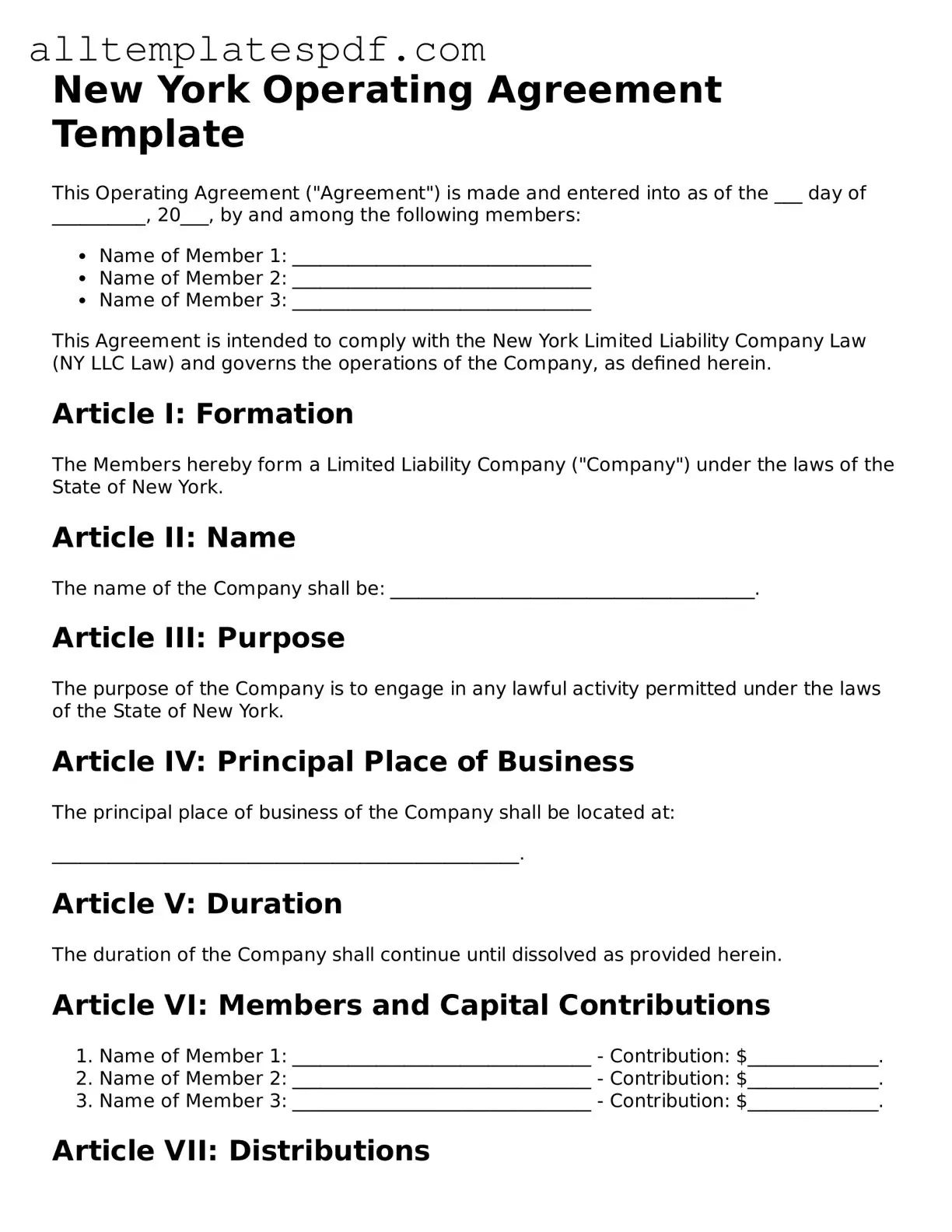When individuals set out to fill out the New York Operating Agreement form, they often overlook critical details that can lead to complications down the line. One common mistake is failing to clearly define the roles and responsibilities of each member. Without a precise outline of who does what, disputes can arise, leading to confusion and potential conflicts. Clearly stating these roles not only helps in daily operations but also establishes accountability among members.
Another frequent error is neglecting to include provisions for decision-making processes. Many people assume that decisions will be made informally or by consensus. However, this can lead to gridlock when members disagree. By specifying how decisions will be made—whether by majority vote, unanimous consent, or another method—members can ensure smoother operations and avoid future disagreements.
Additionally, individuals often forget to address the issue of profit distribution. The Operating Agreement should outline how profits and losses will be allocated among members. Without this clarity, misunderstandings can occur, potentially leading to resentment and disputes. It is essential to be explicit about how financial matters will be handled to foster transparency and trust among members.
Another mistake is not including a buy-sell agreement. Life circumstances change, and members may need to exit the business for various reasons. A buy-sell agreement provides a clear framework for how a member’s interest can be sold or transferred. This foresight can prevent chaos and ensure that remaining members can continue the business without disruption.
Finally, many people fail to update the Operating Agreement as their business evolves. As companies grow and change, so too should the agreements that govern them. Regular reviews and updates to the Operating Agreement can help reflect new realities, such as changes in membership or shifts in business strategy. Keeping the document current is crucial for maintaining clarity and preventing misunderstandings.
